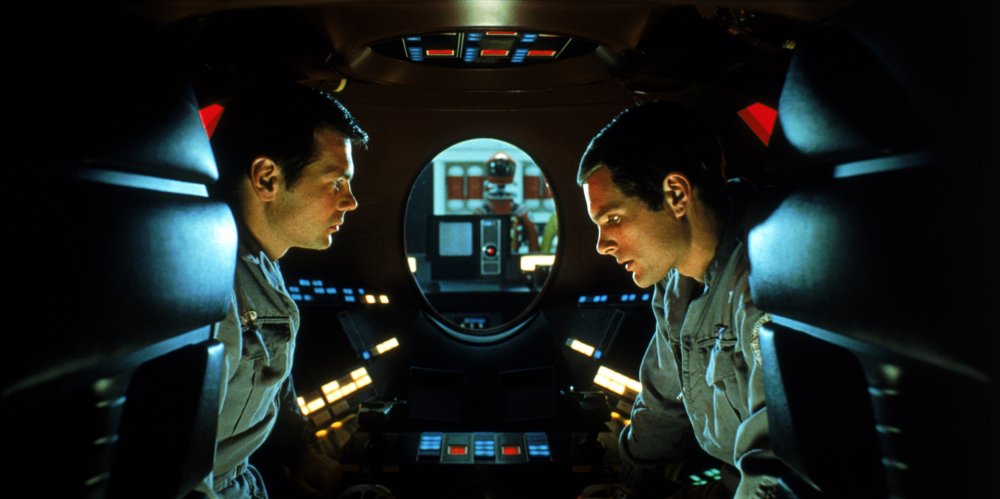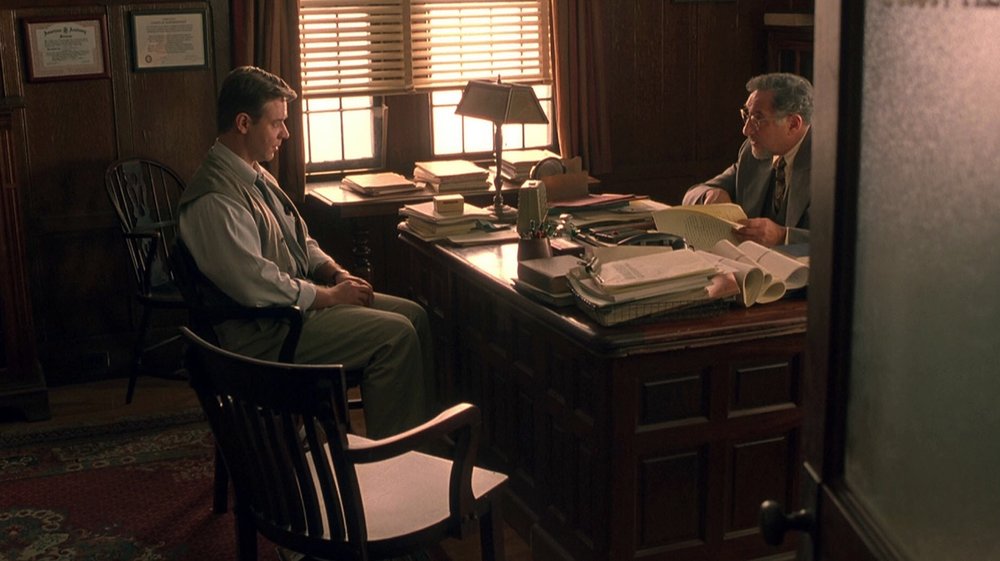
Fiza Chughtai
-
Posts
26 -
Joined
-
Last visited
Posts posted by Fiza Chughtai
-
-
6 minutes ago, Phil Rhodes said:
Pretty much that.
Colour balancing to a certain CT.
Aperture balancing to certain value is called changing stops, but changing certain color temperature from one value to other value cant be called changing color stops?
-
1 minute ago, Phil Rhodes said:
Stops refer to exposure, usually.
What would be the technical term to say changing color temperature values?
-
2 hours ago, Phil Rhodes said:
Half CTO is less orange, so the light is still blue compared to a 3200K-balanced camera.
Why not white balance 1 or 2 stop over to save the extra step of adding half CTO?
-
25 minutes ago, Doyle Smith said:
For night shoots, we'd usually go 1/2 CTO's so the "moonlight" ambiance would be half blue compared to our 3200 film balance. Full blue was kind of distracting to me personally. Practicals would read as nominally "white" or slightly warmer if desired.
May you please explain it more. CTO is the orange gel, so it will throw orange tiint..isnt it? so how will it show blue moonlight?
Do you white balance your camera for night shots at 3200? and 5600 only for day shots?
Also, if camera is white balanced at 3200, wouldnt HMIs will show blue light without help of any gel?
-
Till now I have found 2 technical reasons to opt for 1.85 if one has to;
1. To fit the max size of cinema screens (i.e. if this is the ground reality that screens are of mostly 1.85 ratio..are they?
2. To use the max film negative area to avoid degradation of quality as one of the contributor mentioned in the comments. (Though with such High Tech DI services available nowadays would resolution even matter when image resolutions are already too high to worry about any kind of degradation cause of not using full area of film negative?
-
6 minutes ago, Dom Jaeger said:
The thing is, if you have an eye for composition, you would probably frame the same scene differently given a different aspect ratio. Cropping a well-composed image into a different aspect ratio is not the same thing as an original composition.
Ya I agree.
-
6 hours ago, Doug Palmer said:
Thanks David, I agree your examples do work on both ratios, and arguably the 16:9 one is slightly better. But what I meant about two-shots is more of the closeup kind.
Somehow for me, I find the 1.85:1 ratio more interesting.
And the wider ratios such as 2.2:1 likewise, when there's other important details in frame!
It would be better to compare same scenes/compositions in different ratios
-
8 minutes ago, John Salim said:
I for one love ALL aspect ratios.
As long as you're composing for the frame, what's the problem ?That is not the discussion.
-
-
21 hours ago, Brian Drysdale said:
Cinemas are set up for 1.85:1 projection, as is the workflow and the cameras designed for cinema productions. 16:9 can have slight pillars on either side if you're going through the full 2k DCP workflow,.
So we can say that 1.85 is shot to fit the extreme size of most of the cinema screens without pillar boxing and letter boxing? Aint cinema screens mostly in 2.39 aspect ratio?
-
9 hours ago, Jon O'Brien said:
"'..The aspect ratio was probably decided just by eye. 2:1 was too cropped, and 16:9 wasn't wide enough. So someone just said, "okay, 1.85:1 looks about right .... we'll make it that."
I guess it was the other way around isn't it? 1.85 existed before 2.00:1, 1.85 wasnt wide and 2.39 was too wide, so Vittoria came up with 2:1
-
13 hours ago, Brian Drysdale said:
No one will stop people shooting 2.00:1, it's easier with digital projection than with film projection.
Traditions still occur, especially since some directors like to shoot on film, rather than digital formats.
Based on your given technical reasoning, may you please elaborate;
1. Why 1.85 is easy for Film Projection'? and 2.00:1 and 2.39 are not
2. Even if some directors likes to shoot on film, those films are later Projected in Cinemas Digitally, so what is the hindrance in shooting 2.00:1 or 2.39:1 to get the desired wider aspect which 1.78 does not provides, and makes hardly any difference in 1.85 so why not just opt for 1.78 if does not want as wide as 2.00:1 or 2.39? > This happens to be my original posted query to know the specific Technical or Creative reasoning to shoot in 1.85 rather just blindly following the tradition.
-
57 minutes ago, Brian Drysdale said:
!.85 is the established cinema aspect ratio, there's only need to use it if you're shooting films for theatrical release. When you're shooting 1.85 you are aware that it's "wider" than !6:9 when composing shots
If one has to shoot 'wider' than 1.78, they can go for 2:00:1 or 2.39...why go for 1.85 which is hardly any noticeable different than 1.78? In-terms of technical and aesthetic reasons, not just for the sake of traditions.
-
21 hours ago, John Salim said:
Generally speaking 1.85:1 is a cinema format, whereas 16:9 is a television format.
John S ?
You mean the cinema screen sizes are 1.85 and that is why still movies are shot in 1.85 cause 1.78 will not fit the cinema screen size?
-
18 hours ago, Dom Jaeger said:
It’s so close visually to 1.78...
That was the original question too, when it is already too close to 1.78 then what is the need to shoot for 1.85 for current age films
-
Hi,
1.85:1 ratio is almost 16:9, so whats the need of shooting 1.85:1 rather simply shooting 16:9 ?
Regards
-
On 2/14/2021 at 7:15 PM, David Mullen ASC said:
35mm 4-perf Camera Aperture (Spherical)
1.33:1 Full/Silent/Super 35 .980" x .735" 24.89mm x 18.67mmThe original silent era 35mm movie format was 4-perf tall, which is 4:3 (1.33 : 1.)
In 1932, after the optical soundtrack started taking up space on the left side of the print, shaving the width of the image from 1.33 to 1.19 : 1, the Academy proposed the projector gate, besides covering over the optical soundtrack, also crop the top and bottom a little, creating a 1.37 : 1 shape.
Thank you Mr. David, big help.
-
Hi,
What are the Native Aspect Ratio of 35/70/Imax film negatives?
Also, I read that 35mm negative aspect ratio is 2.39:1, so how does some old films have the ratio of 1.37:1? (which gives almost 4:3 image on 16:9 screen with pillar boxing but not sure if that's exactly 4:3)
Regards
-
1 hour ago, Stuart Brereton said:
No. Usually when creating moonlight with an HMI you would use a tungsten white balance, as often your other, practical sources are tungsten balanced. CTB gels absorb a lot of light, so are generally not used unless necessary.
Thank you, your DP pic is Florescent light on the background wall and LED or HMI at 5600 white balance camera? or is it tungsten white balanced camera with HMI in BG and tungsten on your face?
-
4 hours ago, Stuart Brereton said:
You can do it either way. If the HMI is your only light source, it might be easier to change your white balance, but if you have other light sources in shot which would also be affected by changing the white balance, you might choose to alter the color with gel instead. There is no "correct" way to do it. It just depends on the needs of the shot.
Got it!!..so for most of the scenerios and to make it a habit, using Gels seems more appropriate.
-
6 hours ago, Ed Conley said:
here are the "Classic" lights you are referring to, seen in the background on a lot Music Videos:
https://www.mole.com/fays-parsThank you!...usually these are 3200K ?
-
1 hour ago, Stuart Brereton said:
If you shoot daylight balanced lamps with a tungsten balanced camera or film stock, they will appear cold and blue. This is basic color temperature theory.
So what is the correct way?..use CTB on HMI or white balance your Digital camera on Tungsten?
-
1 hour ago, Phil Rhodes said:
By design all HMIs are the same colour temperature.
They tend to get a bit cooler and greener as the bulbs age, so if it's critical that you have several that match, some people will spend time testing out the exact ones they're going to be using, replacing bulbs as necessary or establishing per-light filter packs to match them.
P
Ok thanks Phil, so if all HMIs are nearly 5600K that is white day light, then how does in most of the Hollywood movies in night shots blue light is shown by the use of HMI...is that cz of the use of CTB? is this possible for any HMI to generate blue light without CTB?
-
Thank you Stuart for replying.
Yes you are right about the Brute..I was asking something like that but bigger in size.
Regarding color temp of HMI of different powers, are they all 5600??





Color Temperature of Different HMI Lights
in Lighting for Film & Video
Posted
Ya I understand how variables effect the impact of different lights' outputs. Thanks
On which factors to decide the baseline value (WB)?..for single source it may be easier to decide. But mostly I guess you are always using more than one light source, so whether day or night what are the factors to evaluate the decision of what to set as WB? and are there any common tried tested go to preferred values for shooting day and night scenes?